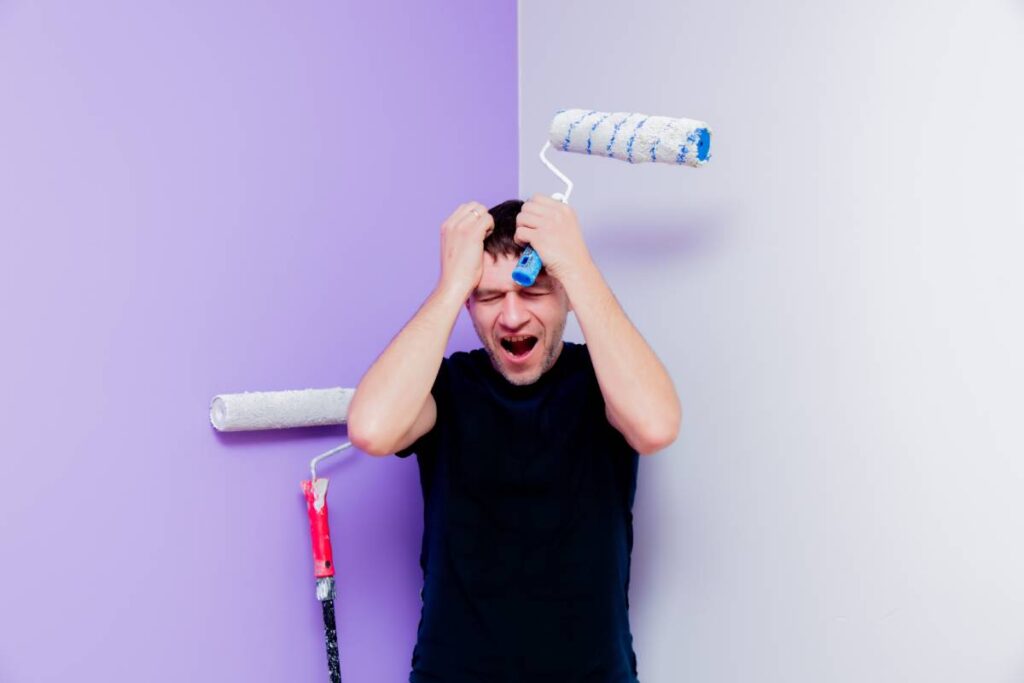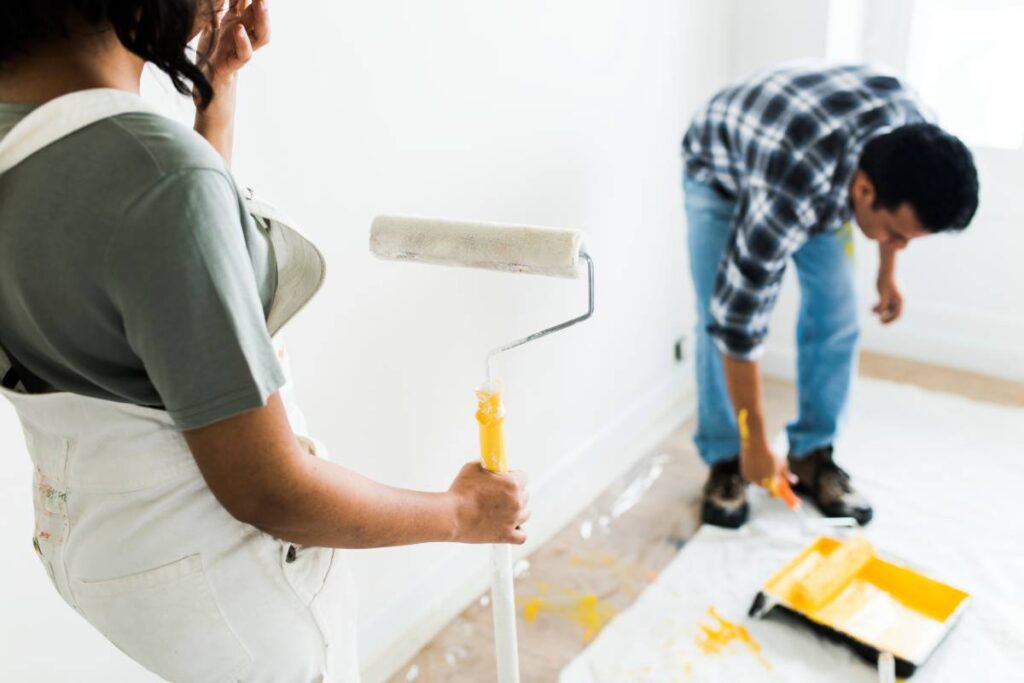Getting ready to paint a room or surface? Great! Let’s make it easy. We’ve got three things to chat about: how much paint to buy, whether to use primer, and how much primer you’ll need. Simple, right?
These steps are like the paint project’s GPS, guiding you to a smooth and fabulous finish. So, let’s break it down and make painting a breeze, even if you’re new to the game.
How many litres of paint do I need per square metre?
Choosing the right amount of paint for a project is essential to achieve a beautiful and long-lasting interior and exterior paint finish. To determine how many litres of paint you need per square metre, you’ll need to consider a few key factors. Let’s break it down in a simple and easy-to-understand way.
The first factor to consider is the type of surface you’re painting. Different surfaces absorb paint differently, so it’s crucial to choose the right amount for optimal coverage. Generally, rough or porous surfaces may require more paint compared to smooth surfaces. If you’re unsure about the surface type, it’s a good idea to consult with a paint professional for guidance.
Next, you’ll need to think about the number of coats you plan to apply. For most projects, especially when painting a new surface or making a significant colour change, two coats are recommended for the best results. Keep this in mind when calculating the total amount of paint needed.

Now, let’s get into the calculation itself. The formula for determining the amount of paint required per square metre is relatively straightforward:

To break it down further:
- Total Surface Area (square metres): Measure the height and width of the surface you’re painting and multiply these dimensions to find the total surface area in square metres.
- Number of Coats: Decide whether you’ll be applying one or two coats. For most projects, two coats are recommended.
- Coverage per Litre (square metres per litre): This information is usually provided on the paint can and represents how much surface area one litre of paint can cover. It’s essential to use the coverage information for the specific type of paint you’re using.
By plugging in these values into the formula, you’ll get a precise estimate of the amount of paint needed for your project, as well as the cost per square metre so you can estimate the project budget as well.
How much primer will I need?
Selecting the correct amount of primer is a crucial step in achieving a flawless paint job. Primer not only enhances adhesion but also provides a smooth surface for the paint to adhere to. To determine how much primer you’ll need for your project, let’s simplify the process and break it down into easy-to-understand steps.
The first consideration is the surface type you’re working with. Different surfaces may have different absorption rates, affecting the amount of primer required. Porous surfaces like raw wood or drywall may absorb more primer than smoother surfaces such as previously painted walls or metal. If you’re uncertain about the surface, seeking advice from a knowledgeable source, such as a paint professional, can be beneficial.
The second factor to bear in mind is the size of the area you’re priming. Measure the height and width of the surface and multiply these dimensions to find the total square footage. This information is crucial for accurately calculating the amount of primer needed.

Now, let’s delve into the calculation itself. The formula for determining the amount of primer required is straightforward:

Here’s a breakdown of the components:
- Total Square Footage: Measure the height and width of the surface and multiply these values to find the total square footage. This is the area you’ll be applying primer to.
- Coverage per Litre (square feet per litre): This information is typically provided on the primer container and indicates the area one litre of primer can cover. Different primers have varying coverage capacities, so it’s essential to use the specific product information for accurate calculations.
This formula will help you get an estimate of the amount of primer needed for your project. It’s recommended to apply at least one coat of primer, but some situations may require additional coats for optimal results.
Consider purchasing a little extra primer to account for any unexpected variations in the surface or absorption rates. This ensures you have enough primer to achieve a smooth and even base for your paint.
Can I paint my wall without primer?
The primer serves as a preparatory coat before applying paint. While it might be tempting to skip this step, using primer offers several advantages that can enhance the final result of your painting project.
Firstly, primer improves adhesion. Walls, especially those with uneven textures or porous surfaces, may not provide an ideal surface for paint to adhere to directly. The primer creates a smooth and uniform base, allowing the paint to grip onto the surface more effectively. This is particularly important if you’re painting over a surface that has never been painted before or if you’re changing the colour dramatically.
Secondly, primer helps to seal and protect the surface. It acts as a barrier, preventing the paint from being absorbed too quickly into the wall. This is especially crucial when dealing with porous materials like drywall or untreated wood. Without primer, the paint might be absorbed unevenly, leading to blotches and an uneven finish.

Moreover, primer can improve paint coverage. It creates a consistent surface, allowing the paint to spread more evenly and reducing the amount of paint needed to achieve satisfactory coverage. This can be both cost-effective and time-saving in the long run.
Additionally, using primer can help to block stains and prevent them from bleeding through the paint. Stains such as water spots, grease marks, or crayon marks on the wall can be effectively sealed with a quality primer, ensuring a clean and professional-looking final result.
While there are instances where you might be tempted to skip the primer, such as when repainting a wall with the same colour, it’s generally advisable to use primer for the reasons mentioned above.
If you’re working with a limited budget or time constraints, consider using a paint-and-primer combination product. These products are designed to provide the benefits of both primer and paint in one application, making the painting process more efficient.
Conclusion
Ready to transform your space with a fresh coat of paint? Awesome! Now that you know how much paint to grab, the scoop on using primer, and the right amount of primer, you’re practically a painting pro. Armed with these tips, you’re not just painting; you’re creating a masterpiece.
So, grab those brushes, pick your colours, and let the painting adventure begin. Happy painting!

